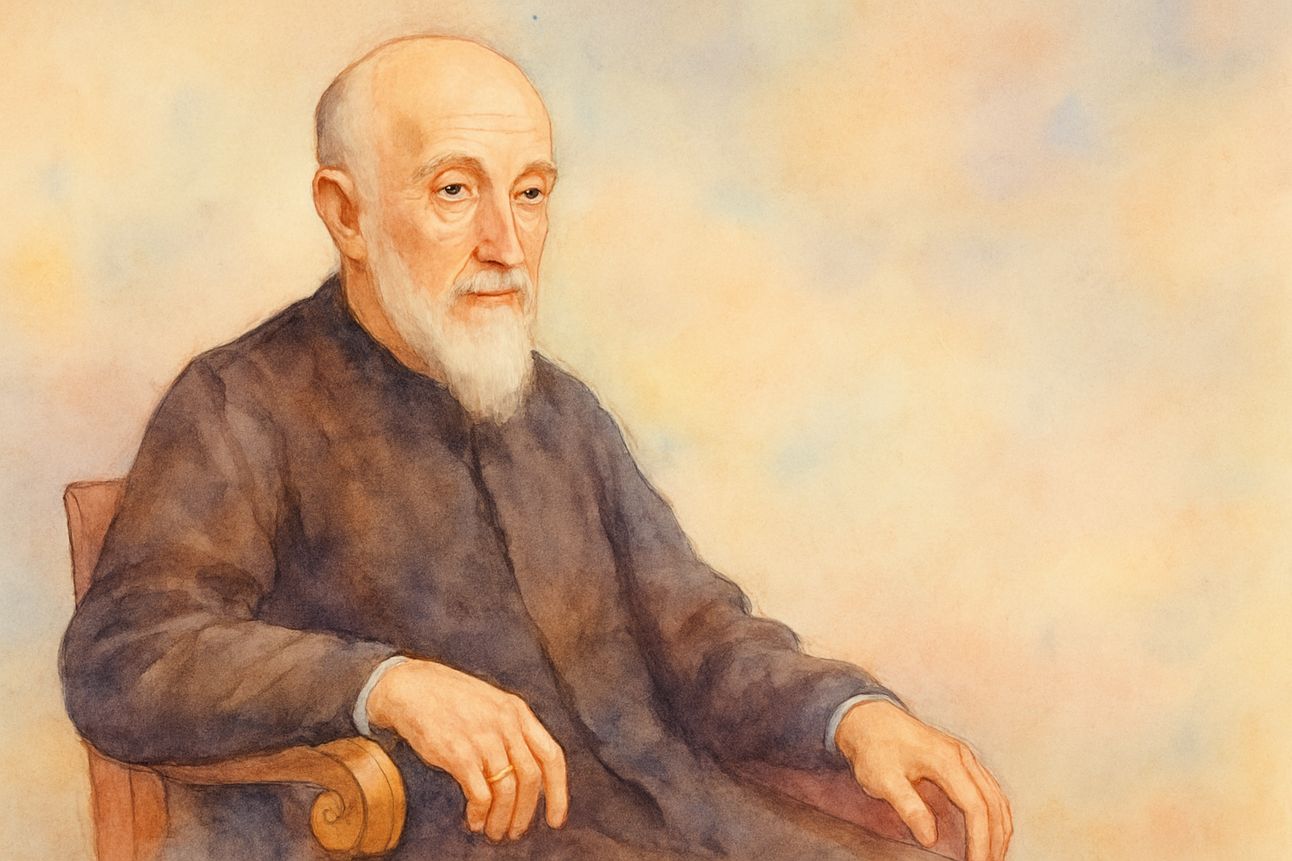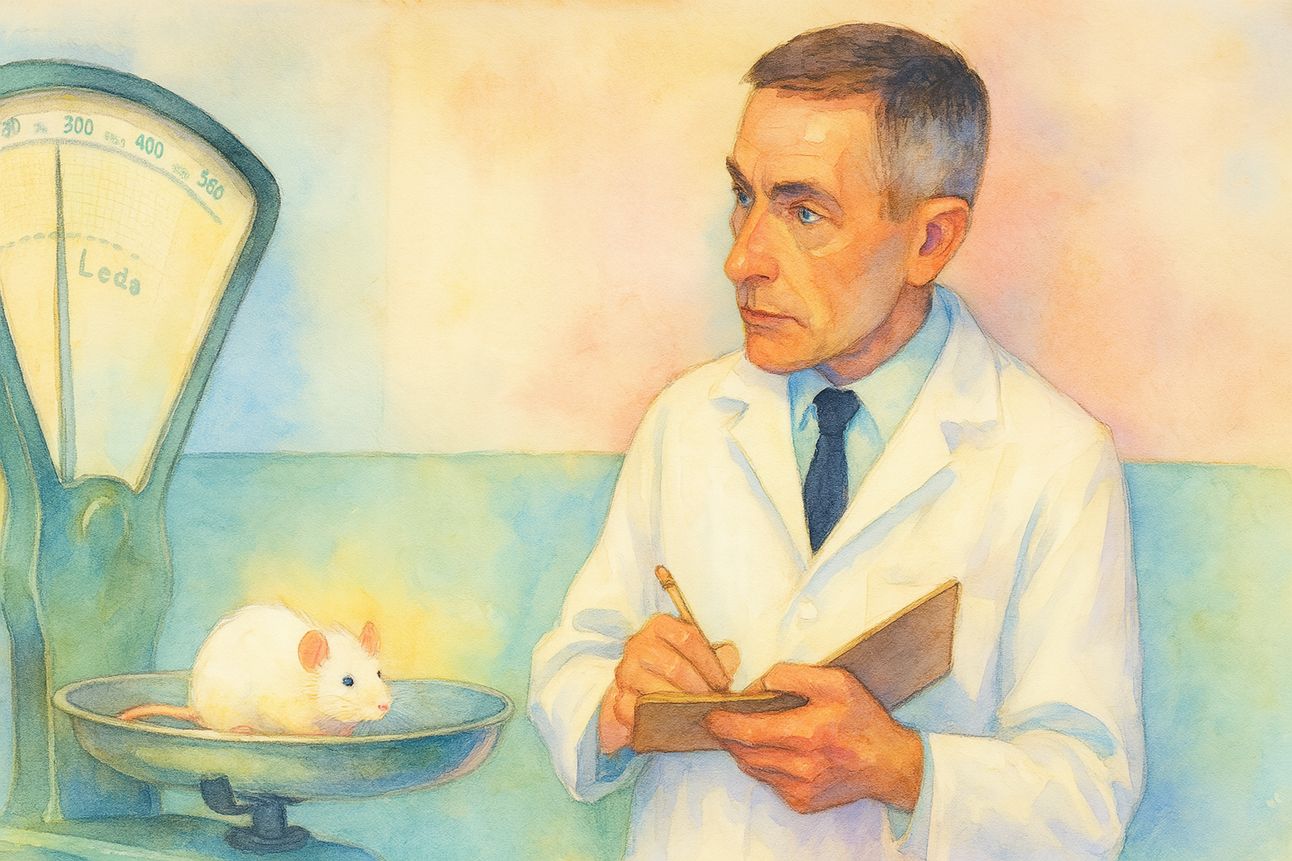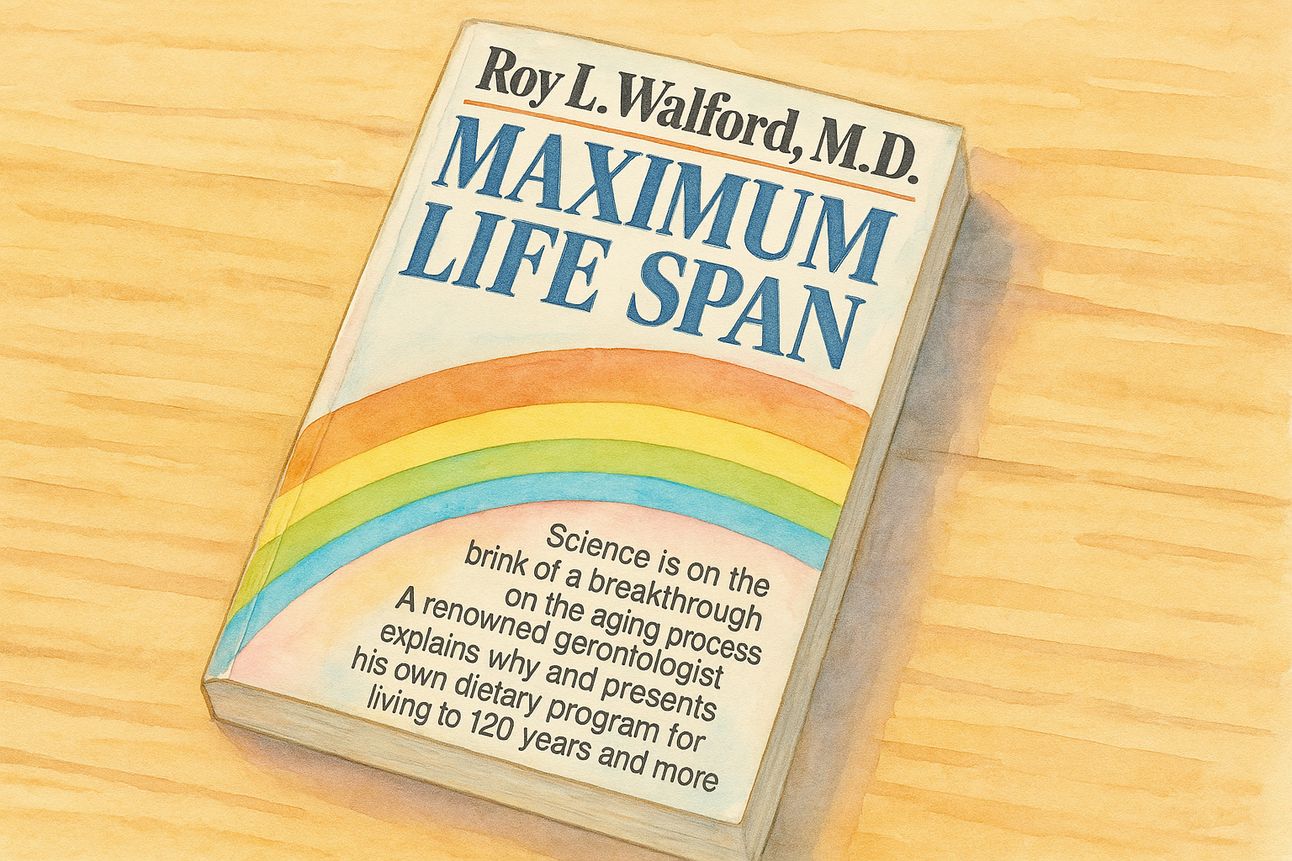
The fasting-mimicking diet (in 2025)
Think of the fasting-mimicking diet FMD as a 5-day, plant-based hack that delivers many of the same metabolic wins as a water fast - without the misery of zero-calorie starvation. Developed by longevity scientist Valter Longo and commercialized as Prolon, the protocol slashes calories and protein just long enough to flip your body from “grow” to “repair” mode, then lets you return to normal eating.
In the comprehensive guide below you’ll see exactly how FMD’s calorie-cycled approach stacks up against intermittent fasting, time-restricted feeding, and prolonged water fasting, plus a snapshot of the science and many of the human trials to date.
Use it to decide whether a periodic five-day reboot is the smarter fit for your health and schedule.
💡 This article is part of LEVITY Knowledge, a series of explainers on longevity science and aging biology. LEVITY is a podcast and newsletter about unlimited lifespan and the future of medicine. Subscribe here for weekly insights on longevity biotech and the quest to solve aging.
The fasting-mimicking diet (FMD): Ancient secrets, modern science, and how it works
The fasting-mimicking diet (FMD) is a nutrition program designed to give you the benefits of fasting without completely starving yourself. In practice, it’s a 5-day very-low-calorie diet (high in healthy fats, very low in protein and sugars) that tricks your body into “fasting mode” even though you’re still eating a little.
By restricting calories and protein for several days, FMD triggers many of the same metabolic changes as a water-only fast – but with food on the menu. In short, it’s like telling your body, “Hey, we’re fasting!” while sneaking it just enough nutrients to take the edge off.
How it works and compares to other methods
During the 5-day FMD, you typically eat around 1,100 calories on day 1, then ~700 calories on days 2-5 with a specific macro-nutrient mix (roughly 9-11% protein, 44-46% fat, and 43-47% carbs)
The diet is plant-based (think bars, soups, olives, herbal teas, and kale crackers) and low in protein and carbs to keep growth signals in the body quiet. This protocol was developed by longevity researcher Valter Longo*, who even packaged it into a commercial meal program called Prolon. The goal is to mimic a 5-day water fast in terms of biological effects while “fasting with food”.
* Check out out LEVITY podcast episode with Valter Longo below:
How FMD differs from other fasting strategies
Unlike traditional fasting where you consume zero calories, the FMD lets you nibble on carefully planned small meals. It’s not meant to be done every day, but in periodic cycles - often 5 days of FMD per month (or every other month, or three times per year - it depends), with normal eating on the other days. This periodic approach aims to induce a deep fasting state for a short interval, then allow full recovery. In the sections below, we’ll compare FMD to other popular fasting methods and dive into what happens in your body during those five semi-starved days.
FMD vs Intermittent fasting, prolonged fasting, and time-restricted feeding
Not all “fasts” are created equal. Here’s how the fasting-mimicking diet stacks up against other fasting styles:
Intermittent fasting (IF): Intermittent fasting is an umbrella term for eating patterns that cycle between fasting and normal eating within a week (for example, the 5:2 diet or alternate-day fasting). IF usually involves complete abstinence from calories during the fasting periods, whereas FMD allows a continuous reduced calorie intake.
In other words, if IF is “eat nothing for 24 hours, then feast,” FMD is “eat very little for 5 days, then eat normally.” IF regimens tend to have shorter fasting windows (≤ 48 hours) and you refeed more frequently than on FMD. Both IF and FMD can trigger some fasting benefits, but FMD’s multi-day sustained calorie restriction may push the body into a deeper fasting state than a brief daily fast.
Time-restricted feeding (TRF): Time-restricted feeding usually means you eat only within a certain daily window (say an 8-hour window each day, and fast for 16 hours overnight). You eat every day, just within a shorter timeframe - it’s more about aligning with circadian rhythms and giving your body a daily fasting period. FMD, by contrast, is multi-day and much more intense in calorie restriction. Think of TRF as “skip breakfast (or dinner) daily”, while FMD is “extremely light breakfast, lunch, and dinner for five days straight”.
Most modern TRF trials use nothing more than a nightly 14–16 h fast. On its own that usually yields modest weight-loss and metabolic changes (~1–3 kg, small HbA1c drop). The benefits become clinically meaningful when the window is early, paired with mild calorie restriction, or combined with structured exercise or high-quality diet.
Prolonged water fasting: This is the real deal - consuming no food at all (only water/tea) for multiple days. A water-only fast of ~3–5 days will similarly shift you into ketosis, lower growth-factor signals, and activate cellular cleanup (autophagy), but it’s notoriously hard to endure and can carry risks. Research shows that multi-day water fasting can indeed yield benefits like weight loss, improved insulin sensitivity, and even anti-cancer effects in the body, but it also comes with safety concerns and side effects. Severe fasting can cause dizziness, nutrient deficiencies, muscle loss, and is not feasible for many people to do regularly.
The FMD was created to capture the upsides of prolonged fasting while sidestepping the downsides. By allowing a small intake of food, FMD improves compliance - it’s psychologically easier and avoids the more dangerous metabolic crashes. One might call FMD a “fasting hack” for those of us who aren’t hardcore enough to do five days on water alone.
In summary: Intermittent fasting and TRF give you fasting in doses - frequent short fasts woven into your routine - whereas the FMD is a periodic deep fast - a plunge into fasting metabolism for several days, but only occasionally. And compared to a full-on water fast, FMD is gentler and more practical for most. As one scientific review neatly put it: “FMD differs from IF in that it allows for reduced calorie intake instead of complete abstinence during the fasting period”, typically done as cycles of consecutive fasting-mimicking days followed by normal eating.
But remember: No approach is “better” for everyone - it depends on your lifestyle and goals - but FMD offers a unique middle path between daily moderation and extreme fasting.
A brief history: From ancient fasts to the FMD
Humans have been experimenting with fasting for millennia - sometimes by choice, sometimes by famine, and sometimes in the name of health or spirituality. The FMD didn’t appear out of thin air; its roots trace back through history.
Ancient origins – Daoist longevity practices: Fasting as a health practice is as old as civilization. In ancient China, Daoist monks practiced “Bigu,” or grain avoidance, as a technique to achieve xian, meaning transcendence or immortality.
The idea was that by abstaining from staple foods (or sometimes all food), one could purify the body and extend life. This wasn’t just a myth - it reflects an early understanding that periodic deprivation might have rejuvenating effects.
Similar ideas appeared in other cultures: many religions incorporated fasting for spiritual and health reasons. The Daoists in particular were the original biohackers – experimenting with diet, herbs, and fasting to find the elixir of longevity. Of course, they didn’t have PubMed studies to cite; they were guided by observation and philosophy. It’s fascinating that modern science is now validating some of these ancient intuitions about caloric restriction and health.

An interpretation of Luigi Cornaro, made by ChatGPT.
Renaissance wisdom – Luigi Cornaro’s “sober life”: Jump to 16th-century Italy, and meet Luigi Cornaro, a Venetian nobleman often hailed as history’s first calorie restriction guru. Cornaro wrecked his health with gluttonous living in his youth, then around age 35 dramatically pared down his diet in a bid to recover.
This extreme moderation worked wonders: his ailments vanished, and Cornaro went on to live to a ripe old age of ~98, according to his account.*
* Gerontologists such as Steven Austad judge Cornaro’s claimed ~98 years to be “almost certainly exaggerated”, estimating he probably died in his early eighties - still an impressive lifespan for the 16th century.
He wrote Discourses on the Sober Life (Discorsi della Vita Sobria), basically a 16th-century longevity lifestyle book, enthusiastically preaching that eating less is the key to a long, vigorous life. His story spread across Europe, making him a early celebrity of life extension. While Cornaro’s approach wasn’t a structured multi-day fast (he consistently ate a little every day), it was an antecedent to the idea that severe caloric reduction can slow aging. In a sense, he was practicing a daily “mini-FMD” or chronic calorie restriction – and his apparent success kept the idea of dietary restriction alive through the centuries.

An interpretation of Clive McCay with his rats, made by ChatGPT.
Scientific Era – Calorie Restriction in the Lab: The early 20th century brought these fasting theories into the scientific arena. In 1935, Clive M. McCay at Cornell University made a landmark discovery: rats fed a severely calorie-restricted diet lived longer than rats on normal chow. McCay’s team found they could extend rats’ lifespans by ~33% (from about 3 years to 4 years) just by feeding them much less, as long as essential nutrients were maintained. The calorie-restricted rats also stayed more youthful and had fewer diseases in old age.
This was a jaw-dropper - it was the first time anyone had formally proven in the lab that eating less could extend an animal’s life. Over subsequent decades, this finding was replicated in mice, and even in creatures from yeast to fruit flies. By the late 20th century, caloric restriction (CR) - i.e. chronic under-nutrition without malnutrition - was the gold standard intervention to extend lifespan in animal models.
Roy Walford and the Biosphere 2 Experiment: If there was a prophet of calorie restriction in the late 20th century, it was Dr. Roy Walford. A UCLA gerontologist, Walford believed CR could dramatically slow human aging. He even self-practiced a CR diet for decades. But his most famous (or infamous) experiment was Biosphere 2 in the early 1990s.
Biosphere 2 was a giant sealed dome in Arizona – a prototype space colony housing 8 people and a self-contained ecosystem. The plan wasn’t to study fasting, but due to lower-than-expected crop yields, the crew (including Walford) ended up on a nutrient-dense, low-calorie diet (~1750-2100 kcal/day) for most of the two-year isolation.
Basically, they inadvertantly became human guinea pigs for long-term calorie restriction. The results were telling: the Biosphere 2 crew experienced significant weight loss (~17% of body weight), but also dramatic drops in their metabolic and cardiovascular risk markers. Their blood pressure fell ~20–25%, cholesterol dropped ~30%, blood glucose ~20%, and insulin levels ~42% down - changes paralleling those seen in CR laboratory animals. Even white blood cell counts declined (a sign of slowed immune-system aging, possibly). And despite the hunger and tough living conditions, the crew remained in excellent health and high activity throughout Biosphere 2. The crew’s health markers ended up resembling those of much younger individuals.

The cover of Maximum Lifespan, as portrayed by ChatGPT.
Roy Walford had actually trumpeted chronic calorie restriction (CR) years before he set foot in the Arizona dome. His books Maximum Life Span (1983) and The 120-Year Diet (1986) laid out a nutrient-dense ~1 600 kcal regimen and claimed it could double human “vital years.” Biosphere 2 (1991-1993) became his real-world stress test.
But inside the sealed habitat Walford’s weight fell ~17 %, his BMI dipped below 18, and the crew has afterwards described constant hunger, lethargy, and friction.
Valter Longo, at that point working in Walford’s lab, was in Arizona to witness Walford emerge gaunt and irritable, and quipped that the 67-year-old physician “looked like a skeleton.” Walford, however, was still convinced that long-term calorie restriction was the surest path to extreme longevity.
Yet the hardship took a toll. Within a few years Walford developed amyotrophic lateral sclerosis (ALS) and ultimately died in 2004 at age 79 from respiratory failure linked to the disease. Case reports later speculated that long-term severe CR might have heightened his vulnerability to neuro-degeneration.
For Valter Longo, Walford’s decline underscored an important lesson: permanent semi-starvation is neither practical nor necessarily safe. Longo’s solution was to keep the beneficial molecular switches (lowered IGF-1, mTOR, etc.) but flip them on periodically - the idea that evolved into today’s fasting-mimicking diet.
This set the stage for FMD.
Valter Longo and the Birth of the FMD: Valter Longo, an Italian-born biogerontologist, trained in part under Roy Walford in the 1990s. Longo took Walford’s torch and ran with it - into the cellular and molecular mechanisms of fasting.
His early research in yeast and mice showed that starvation conditions can kill off damaged cells and activate regenerative changes in the body. Notably, Longo found that fasting lowers levels of growth factor signaling (like IGF-1) and can make organisms more resilient to stress.
One of his striking mouse studies demonstrated that cycles of a “fasting-mimicking diet” in middle-aged mice extended their lifespan, cut tumor incidence nearly in half, and rejuvenated their immune systems. He also showed that when normal cells are starved (short-term) they go into a protective mode, while cancer cells (or other dysfunctional cells) are more likely to die – an intriguing therapeutic window.
By the 2010s, Longo and colleagues had crystallized the FMD protocol as we described: 5 days of a plant-based, low-protein, low-carb, high-fat, ~700-1100 kcal diet, repeated periodically. The goal: maximize fasting’s benefits, minimize its burdens. Longo’s lab tested this diet in pilot human trials and saw promising results – weight loss, improved metabolic markers, and good compliance. In 2017, they published the first clinical trial of FMD in humans (more on that shortly), and the FMD officially went mainstream.
Longo even co-founded L-Nutra, the company that sells the 5-day Prolon meal kit*, so that people could follow the fasting-mimicking diet with pre-packaged soups and snacks.
* Longo does not earn royalties from the kit; all proceeds are assigned to the non-profit Create Cures Foundation and funneled back into independent research and patient-access programs.
Today, FMD is a buzzword in the health and longevity scene, but it stands on the shoulders of those centuries of fasting practice and decades of research. As Longo often points out, fasting is “built into our biology” – our ancestors experienced periods of famine, and our bodies evolved ways to adapt and even thrive under those conditions. FMD is about harnessing that ancient survival switch for modern healthspan benefits, without actually having to wander in the desert with no food.

How fasting affects the body: Autophagy, hormones, and cellular rejuvenation
What actually happens inside you during a fasting-mimicking diet? In short, your body shifts from “growth mode” to “repair and conserve mode.” By day 2 or 3 of FMD, a cascade of cellular changes kicks in: hormones and nutrient sensors re-calibrate, cleanup crews get active, and your metabolism flips to a fat-burning state. Let’s break down some key mechanisms:
Dropping the “growth signals”: In an FMD cycle, calories (especially protein) plunge, so circulating insulin and IGF-1 fall 20–40 %. Lower IGF-1 down-shifts the PI3K/Akt/mTOR axis, nudging cells from grow-and-divide toward maintain-and-repair. But the epidemiology of IGF-1 is U-shaped, not linear. Several large cohorts show the lowest all-cause mortality when IGF-1 sits in a mid-range, with both the bottom and the top deciles carrying higher risk. Extremely low IGF-1 in older adults correlates with frailty and sarcopenia, while chronically high IGF-1 in mid-life tracks with cancer and type-2 diabetes.
Put differently:
- In youth and early adulthood IGF-1 is an anabolic ally (bone, height, muscle).
- In mid-life, persistently high IGF-1 may over-stimulate growth pathways and raise tumour risk.
- In late-life, too little IGF-1 can mean weak muscle, brittle bones and a higher fall-and-fracture toll.
FMD seems to trim IGF-1 only transiently - it falls during the five “fast” days and rebounds on re-feeding - so the diet may “pulse” the pathway rather than flat-line it. That pulsatile drop may be enough to engage stress-resistance genes (FOXO, autophagy) without leaving older participants stuck in the frailty zone. Clinical trials indeed find the biggest CR/FMD pay-offs in people who start with high-normal IGF-1; those already at the low end often show little further decline.
In practice, the sweet spot is likely context-dependent: middle-aged over-feeders benefit from dialing IGF-1 down, whereas octogenarians struggling to maintain muscle probably shouldn’t chase ultra-low IGF-1.
AMPK up, mTOR down – triggering autophagy: In a fasting state, cells experience low energy availability. Levels of ATP (cellular energy currency) drop, and AMPK (AMP-activated protein kinase), a cellular energy sensor, gets activated. AMPK is like an internal alarm that says “we’re low on fuel, start conserving and cleaning up!” Activated AMPK inhibits mTOR (mammalian Target of Rapamycin). mTOR is a master regulator that promotes growth and protein synthesis when nutrients are abundant. But when mTOR is inhibited (as in fasting), it releases the brake on autophagy - the process by which cells break down and recycle old, damaged components.
Autophagy literally means “self-eating.” It’s like cellular house-cleaning: the cell starts chewing up misfolded proteins, junky organelles, and even precancerous debris, breaking them down for fuel or spare parts. This process is crucial for tissue rejuvenation and defense against aging. Fasting is one of the most potent natural inducers of autophagy; by day 2 or 3 of a water fast, autophagy is ramped up significantly – and FMD aims to mimic that effect. Analogy: Imagine a business that has hit hard times (low revenue); it might stop new projects (halt growth signaling) and instead send the janitors to rummage through storage and recycle old equipment (autophagy) to save money. FMD puts your cells in exactly that mode.
Research has shown that fasting-induced inhibition of mTORC1 leads to increased autophagy, ketone production, and reduced glucose metabolism – a metabolic shift from growth to deep maintenance.
Fat-burning and ketosis: With minimal carbs coming in on FMD, your body quickly uses up stored glucose and glycogen. By about 48 hours in, it begins burning fat for fuel and producing ketone bodies (just as in a regular fast or ketogenic diet). Ketones (like β-hydroxybutyrate) serve as an alternative energy source for your brain and muscles during prolonged calorie restriction. This state of nutritional ketosis has several benefits: it’s linked to reduced inflammation, can improve metabolic efficiency, and some people report mental clarity or euphoria (the “fasting high”). In fact, the metabolic switch to ketones is thought to be a key aspect of fasting’s health effects. During FMD, by day 3-5, your blood ketone levels will resemble those of someone who’s been fasting on water.
This is why FMD often leads to loss of belly fat and visceral fat - your body is literally consuming its fat stores for energy. Evolutionarily, this makes sense: in times of food scarcity, we dip into our savings (fat) and prioritize survival over growth.
Cellular spring cleaning and regeneration: Perhaps the most exciting effects of FMD happen at the cellular and stem cell level. Fasting doesn’t just burn fat; it also prunes away old cells and stimulates the growth of new ones. In mouse studies, Longo’s team observed that after a period of fasting or FMD, when normal feeding resumes, the body kicks into a regenerative mode – for example, dormant stem cells in the bone marrow get activated to produce fresh immune cells.
Essentially, fasting clears out the damaged or worn-out cells (via programmed cell death or autophagy), and refeeding triggers stem cells to proliferate and rebuild tissue with new cells.
It’s a one-two punch: breakdown followed by rejuvenation.
They showed this in the immune system: a 3-day water fast in mice caused a sort of purge of old immune cells, and refeeding sparked the production of new white blood cells, effectively “rebooting” the immune system. FMD cycles in mice likewise showed signs of multi-system regeneration - new neurons in the brain, improved stem cell function, etc. It’s as if the body, during fasting, takes out the trash and identifies the faulty parts, and upon refeeding, invests in some shiny new replacements.
Reduced inflammation and oxidative stress: Fasting-mimicking diets have been shown to dampen inflammation in the body. During FMD, levels of inflammatory cytokines and markers (like C-reactive protein, CRP) tend to decrease.
Additionally, FMD can cause a shift in immune cell populations – one study noted an increase in the ratio of lymphocytes to monocytes after 3 FMD cycles, which is interpreted as a sign of a more “youthful” immune profile.
Lower insulin and glucose levels also mean less oxidative stress (since high blood sugar can lead to more free radical formation). Many chronic diseases of aging - from arthritis to heart disease - are driven by chronic inflammation, so turning down the inflammatory thermostat is a big plus. Some researchers liken the fasting state to an anti-inflammatory, antioxidative mode that gives your body a chance to repair damage without the constant onslaught of metabolic stressors.
What does the research say? Evidence from studies and trials
The FMD might sound a bit too good to be true – can a 5-day diet really trigger all these benefits? Science is actively investigating. While human research is still in early stages, a number of animal studies and quite a few clinical trials support the effectiveness of FMD (and also highlight some cautions). Here’s a rundown of key findings:
Extended lifespan and healthspan in animals: In mice, periodic fasting or FMD has delivered impressive results. In one study, middle-aged mice put on two cycles of FMD per month lived 11% longer on average than control mice and had a 45% lower incidence of cancers. They also showed improved cognitive performance and less inflammation and bone loss in old age.
Notably, in mice the FMD cycles caused a temporary shrinkage of organs (as old cells were cleared out), followed by a regenerative rebound when they re-fed.
Human trials: The first randomized controlled trial of the fasting-mimicking diet in humans was published in 2017 by Longo’s group. They tested three cycles of a 5-day FMD in 100 generally healthy adults. The results showed significant improvements in key health markers for the FMD group: an average weight loss of about 2.6 kg (with reduced body fat, especially trunk fat), lower blood pressure, and a ~20% drop in IGF-1 levels. Importantly, those who had high risk factors at baseline (high cholesterol, blood glucose, CRP, etc.) saw the biggest improvements - suggesting FMD acts as a “optimizer,” normalizing metabolic markers.
Perhaps most reassuring: No serious adverse effects were reported. A little hunger, tiredness and difficulty resisting pizza, sure - but no significant health complications. This trial established that FMD is feasible and safe for generally healthy people, and can improve markers associated with longevity and disease prevention. It’s worth noting this was short-term: 3 cycles over 3 months. We don’t know long-term outcomes yet (like if doing FMD for years actually extends lifespan or prevents diseases).
The original 2017 USC study jump-started the field, but at least six additional peer-reviewed clinical trials - covering diabetes, liver fat, hypertension, multiple sclerosis, and oncology - have now reproduced or extended the metabolic and inflammatory benefits of the 5-day fasting-mimicking diet. Larger, longer-term studies are ongoing, yet the pattern so far is consistent: short, periodic fasting-mimicking cycles safely nudge weight, cardiometabolic markers, and even biological-age metrics in a favourable direction.
Independent replication and skepticism: So far, a lot of the FMD research has come from Dr. Longo’s group or collaborators, which is understandable (they pioneered it). Independent studies are beginning to appear, and most confirm at least some benefits (weight loss, improved metabolic markers). But it’s fair to say that the broader scientific community is cautiously optimistic but wants more data.
Questions remain like: Does FMD provide benefits beyond what simple calorie reduction would do? (Is it the fasting mimicking aspect, or just eating 1000 kcal/day that’s helping?) Some critics point out that if you eat 5 days of very low-calorie vegan food, of course you’ll see weight and cholesterol drop - but is it any different than a plain 5-day diet?
Proponents argue the specific macro-nutrient composition and consecutive days are key to pushing the body into a fasting metabolism rather than a slow starvation.
Another question: Could less intensive regimens (like a 2-day fast) achieve similar results? We don’t fully know - comparative studies are needed.
More research is needed to answer these and to explore any long-term side effects of recurrent fasting.
In essence, current evidence supports that FMD is a promising strategy for improving metabolic health and possibly influencing aging processes. It’s not snake oil - it has real effects on the body backed by biological research. But it’s also not magic - it won’t make you live radically longer.
Meanwhile, many early adopters are trying FMD for weight management, wellness, or disease prevention, essentially betting on the plausible benefits. Time (and more data) will tell how big of a payoff that bet has.
The 5 days can be challenging
Let’s not sugarcoat it: FMD may be easier than a water fast, but consuming 700-1100 kcal/day is still no picnic. Hunger, fatigue, headaches, difficulty concentrating, irritability, and feeling cold are commonly reported during the 5-day fast-mimicking period.
So, those five days require willpower and planning - you might not be setting any personal records at the gym or doing mentally demanding tasks on day 4 of FMD. Essentially, fasting is a stress on the body, and you will feel it (that’s kind of the point, but it’s not pleasant).
Not suitable for everyone: FMD is not recommended for certain groups. If you’re pregnant or breastfeeding, fasting is a no-go (baby needs consistent nutrients!) If you’re underweight or have a history of eating disorders, the restrictive nature could be dangerous.
People with serious medical conditions should only attempt under doctor supervision, if at all. Even if you’re healthy, if you have a very active job or are an athlete in training, a 5-day very low-calorie stint could impair your performance or safety (imagine a construction worker on a ladder getting woozy from fasting - not good). So, screen yourself - FMD is generally for otherwise healthy adults who can afford a short dietary stress. Always consult a healthcare professional if in doubt.
Cost & convenience
Going with the ready-made Prolon kit is undeniably pricey - five days’ worth of soups and bars can run a few hundred dollars (but, on the other hand, you don’t need to buy other groceries for yourself during those five days).

The Prolon FMD kit.
DIY is cheaper, but you’ll spend time weighing nuts, thinning out soups, and spreadsheet-tracking macros to stay within the patented formula. And - crucially - all published human trials so far have used the L-Nutra–supplied diet (or an identical research formulation), so there’s no peer-reviewed data showing that a home-brewed version delivers the same metabolic or biological-age benefits. In other words, a kitchen-sink imitation may work in theory, but it hasn’t been scientifically validated.
Socially, fasting can be awkward - you might have to bow out of dinner invites or explain why you’re sipping broth while others eat steak. So there’s a lifestyle inconvenience factor for those 5 days. Some people also report that by day 5, they develop food obsessions (constantly thinking about what they’ll eat when it’s over), which isn’t a great mental space.
Bottom line
The fasting-mimicking diet offers a compelling mix of benefits – weight loss, metabolic gains, cellular rejuvenation – grounded in serious research on fasting and caloric restriction. It appears to deliver many of fasting’s perks in a safer, more palatable package, which is a huge plus for those of us who like the idea of fasting more than the practice.
However, it’s not a magic wand or a permanent solution. You have to be willing to endure some hunger and inconvenience, and we still need more data on long-term outcomes and optimal usage.
For health enthusiasts, FMD can be an edifying adventure: you get to experience how your body reacts to a pseudo-fast (often gaining a new appreciation for food afterwards!), and you might reap benefits like a trimmer waist, better lab numbers, and maybe a molecular age rewind.
One might say FMD is a modern twist on ancient wisdom: a way to periodically let the body cleanse and reset, as ascetics and centenarians have implicitly done, but with a 21st-century scientific stamp of approval.
If you’re curious to try it, do your homework, consider speaking with a doctor or nutritionist, and ease into it. And remember, the goal isn’t suffering – it’s to emerge on the other side of those five days feeling rejuvenated.
Enjoyed this deep dive?
🧬 This explainer is part of LEVITY Knowledge - a series exploring the science behind aging and longevity. But there’s more: LEVITY is also a podcast and newsletter covering the latest breakthroughs in life extension, deep-dive features, original essays, and interviews with the scientists and thinkers shaping our future.
👉🏼 Subscribe to LEVITY for weekly insights on longevity biotech and the quest to solve aging.
And remember: Life is good. Death is bad.


